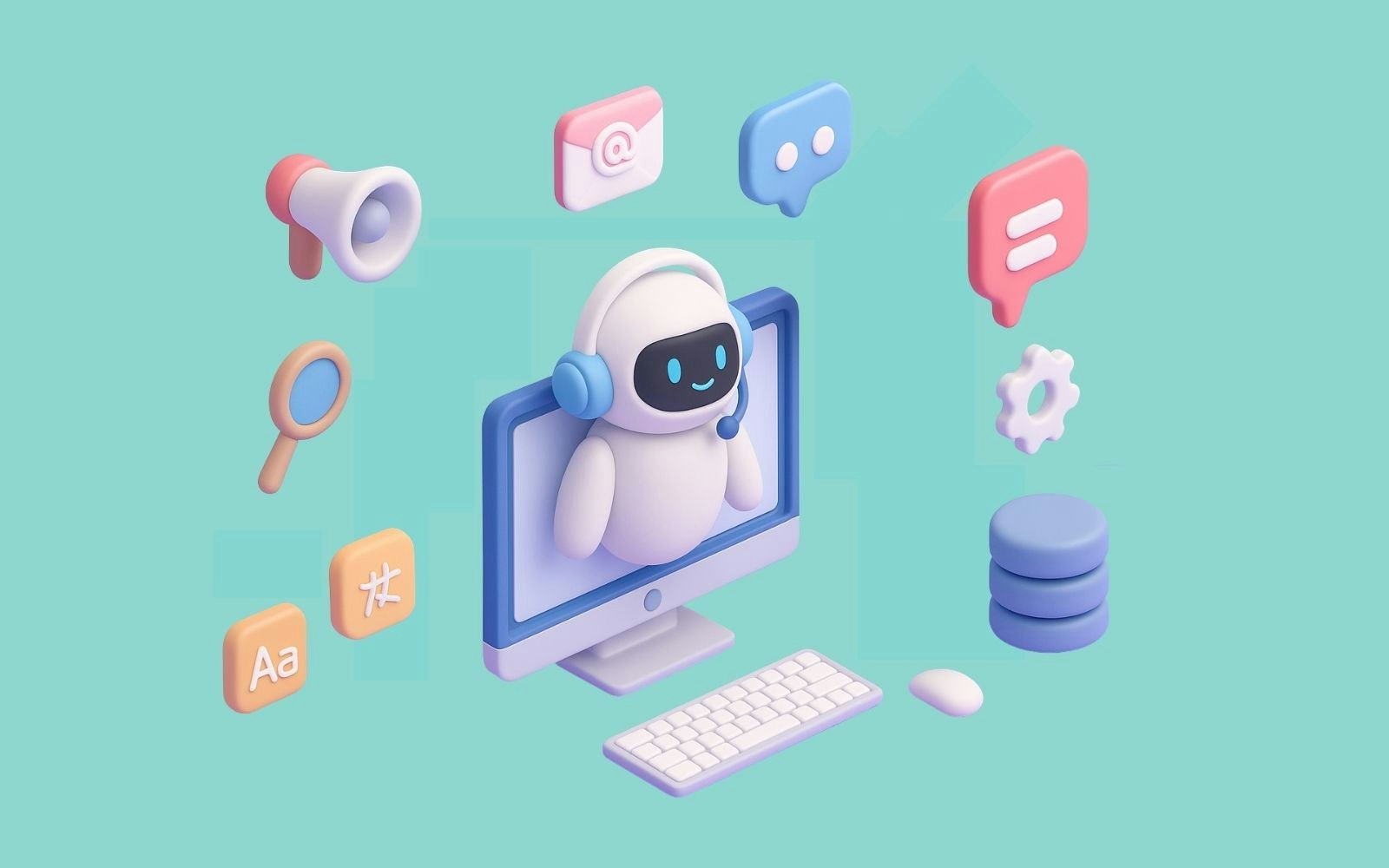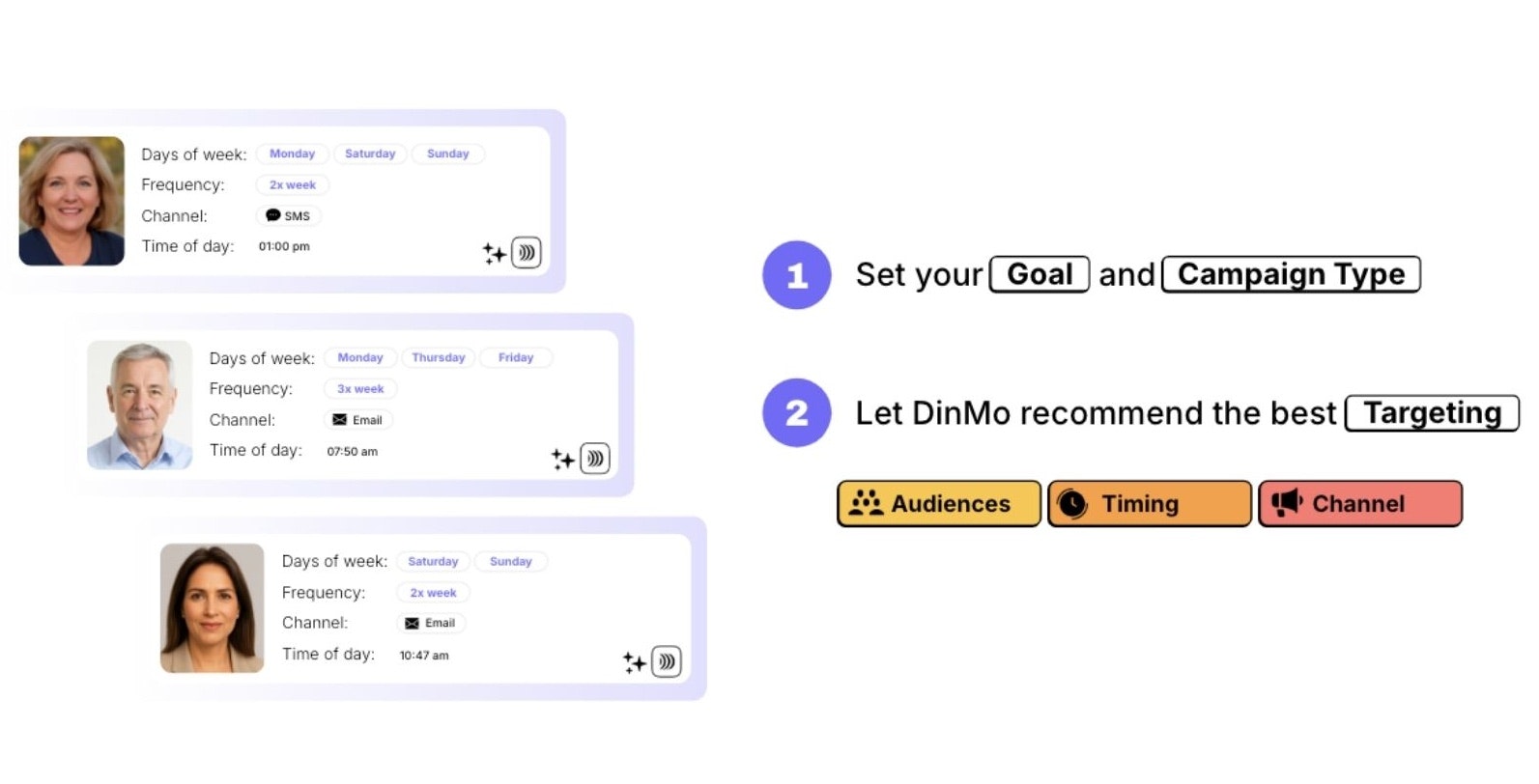
Agentic marketing: autonomous AI at the service of brands
7min • Last updated on Nov 20, 2025

Olivier Renard
Content & SEO Manager
[👉 Summarise this article using ChatGPT, Google AI or Perplexity.]
In its latest Hype Cycle, Gartner grouped emerging technologies into four key areas: the evolution of the developer role, the concept of total experience, cybersecurity, and autonomous artificial intelligence (AI).
Within this last category, AI agents are making a significant breakthrough. In B2B, 33% of marketing leaders consider them a strategic priority according to BCG, compared to 23% in B2C.
After predictive AI and the rise of generative models, a new stage is emerging: the rise of autonomous agents. Capable of orchestrating actions at scale, these systems act, test, optimise, and learn continuously.
For marketing teams, this represents a natural extension of data-driven approaches.
Key Takeaways:
Agentic marketing is based on AI agents capable of autonomously carrying out marketing tasks.
These agents observe, analyse, make decisions, and execute under human supervision. The marketer sets the strategy and retains control.
The main applications relate to customer experience personalisation, omnichannel campaign creation, web optimisation, and reporting.
Reliable and unified data is essential to ensure relevant actions. A Customer Data Platform provides an ideal foundation to power these agents.
🔎 How does agentic AI work, and why is it transforming marketing? Discover the full potential of this technology and how to integrate it effectively into your current strategies. 🚀
Agentic marketing: definition and origins of the concept
Agentic marketing refers to a new approach where artificial intelligence agents can autonomously perform marketing tasks.
They perceive, reason, decide, and execute actions without waiting for instructions at every step.
Unlike traditional automation tools, these systems don’t simply execute pre-defined rules: they adapt and learn from context. AI no longer merely assists workflows or generates content: it can select a segment, propose an offer, optimise a message, or trigger a campaign.
This shift marks a major evolution: the marketer defines the strategy and goals, while AI takes charge of execution, optimising continuously. Marketing remains human-led, but execution becomes smarter, faster, and more personalised.
These capabilities are a direct continuation of recent progress in Large Language Models (LLMs), AI decisioning engines, and the integration of customer data into marketing environments.
👇

Modern Marketing Stack: the ideal set-up
Automation vs agentic AI
This evolution is rooted in AI research, particularly the “perceive → reason → act → learn” model: an agent observes its environment, defines an action strategy, then executes it.
In contrast, traditional automation follows a fixed scheme: triggers, rules, sequences. A CRM workflow or email scenario follows a predetermined script.
With agentic AI, tasks are no longer just programmed: they are delegated. The system analyses the situation, chooses the best action, and learns from outcomes to improve.
Traditional Automation | Agentic AI |
|---|---|
Preconfigured tasks | Objectives + autonomous execution |
Fixed rules | Adaptive reasoning |
Linear process | Perceive → Decision → Action loops |
Constant supervision | Occasional supervision |
Limited to predefined paths | Capacity for exploration and optimisation |
Automation vs agentic AI
In marketing, this model is emerging with the first AI integrations in CRM tools and Martech platforms. Customer Data Platforms (CDPs) activate data to enable autonomous actions by providing a unified customer view.
Marketing leaders define a business objective (e.g., conversion, retention, increasing CLV), and let the agents optimise the journey.
How does agentic marketing work?
The agentic cycle
Observation: Collecting customer signals — web browsing, CRM interactions, purchase history, campaign engagement, digital activity…
Understanding: The AI analyses and detects intent, anticipates behaviours, and identifies the Next Best Action based on context.
Action: The agent triggers a recommendation, message, or campaign aligned with goals: conversion, retention, reactivation, or journey optimisation.
Learning: Each action feeds a continuous improvement loop. The agent measures impact, adjusts its decisions, and refines its models — always under human supervision.
Main types of marketing agents
Campaign agents: Create, adapt, and optimise campaigns automatically.
Example: adjusting budgets based on channel performance, or launching communications when strong signals are detected (product view, cart addition, email disengagement).
Customer experience (CX) agents: Personalise interactions across channels (website, email, mobile app, chat, customer service), and refine messaging in real time.
Analytics agents: Monitor performance, extract insights, generate reports, identify opportunities, and recommend optimisations..
Web optimisation agents: Run A/B tests, adjust UI elements, and dynamically adapt pages based on user profile and intent.
Lifecycle marketing agents: Orchestrate entire journeys. Rather than following fixed workflows, they continuously adapt steps based on customer signals, context, and accumulated learning.
💡 At DinMo, we view AI as a co-pilot designed to enhance your marketing actions through data.
Our DinMo Intelligence module lets you set business objectives, feed your systems with reliable data, and execute actions under your supervision.
Agentic marketing extends beyond this: to agentic commerce, agentic SEO, multimedia creation, and more. The marketer’s role evolves, but their expertise remains central.

The cycle of agentic AI
Main benefits
AI agents scale marketing optimisation and customer experience to a new level. They analyse signals, make decisions in real time, and continuously test and iterate.
For businesses, this unlocks major performance gains. Those that increase personalisation see, on average, a 10–15% revenue uplift (McKinsey).
Benefits include:
Personalisation at scale: Each customer receives contextually relevant recommendations and messages, even across languages and markets.
Continuous performance improvement: Agents test, learn, and optimise continuously. Manual intervention is reduced.
Better customer experience: Journeys are smoother and more coherent, across all touchpoints.
Real-time decision-making: AI responds instantly, seizing opportunities the moment they arise.
Reduced marketing costs: Budgets are optimised automatically, eliminating waste and focusing on high-performing campaigns.
Increased customer value: An enhanced customer experience boosts loyalty and raises CLV.
What impact on marketing teams?
Agentic AI doesn’t replace marketers — it frees them from repetitive tasks. Teams can focus more on strategic direction and business goals.
With AI agents, a marketer can manage campaigns, analyse performance, and optimise journeys, but their expertise remains essential.
Data as a prerequisite
Agentic AI only works effectively when it has access to reliable, complete, and up-to-date data. To make accurate decisions and act autonomously, the agent needs a single source of truth.
The role of a Customer Data Platform (CDP)
This is what enables the CDP to provide a 360° customer view. It helps identify the best moment to intervene and personalise experiences through first-party data.
Unlike a CRM, a CDP unifies data across all channels to build precise segments and feed AI agents. It becomes the data engine of agentic marketing.
With a composable CDP, the process is even simpler: direct connection to the data warehouse, no duplication, stronger governance, and greater scalability.
What DinMo enables:
With our CDP, marketing teams unlock the full potential of agentic AI:
Predictive scoring and recommendations (propensity, impact, churn, next-best-action)
Segments generated in natural language
Automated audience insights and self-learning
Smart activation: optimising campaigns by channel, timing, and audience
Human-in-the-loop framework: validation, prioritisation, and supervision
The data stays within the data warehouse, and teams can operate their agents without technical dependencies.

AI decisioning in DinMo
How to implement an agentic strategy?
In its Predictions: Artificial Intelligence report, Forrester highlights the importance of guidance to succeed in this transition. The goal is to lay the foundations, then gradually increase agent autonomy.
Key steps
Define priority use cases: Start small with high-impact, practical use cases like personalisation or predictive scoring.
Centralise and validate your data: Essential for agents to analyse, decide, and act from a reliable base.
Ensure strong governance: Regulatory compliance, data usage, access control. Humans supervise and stay in charge.
Deploy gradually ('crawl – walk – run' approach): Start with an MVP, learn, then scale to other channels and lifecycle stages.
Train, align and support: Teams move from operators to orchestrators. Provide training on tools, understanding recommendations, and quality control.
Measure and iterate: Track KPIs (conversion rate, CAC, customer satisfaction, LTV). Refine over time.
Common pitfalls to avoid
Despite the potential, some mistakes can hinder your agentic strategy. Poor data quality, misinterpretation, or AI hallucinations can lead to wrong decisions. Human supervision remains crucial, especially at launch.
Governance is equally important. And team preparation is key: autonomous agents may trigger fear or confusion. A gradual approach with training on real use cases helps build trust.
Conclusion
Agentic marketing marks a new phase in artificial intelligence applied to marketing. After automation, predictive AI, and generative models, brands now enter the era of autonomous action, supervised by humans.
These agents don’t replace teams: they take over execution, while marketers lead on strategy and governance. Companies already structured around data will be the first to benefit.
The combination of unified data + composable CDP becomes the foundation for deploying suitable models, testing use cases, and scaling safely.
👉 Discover how DinMo is preparing for autonomous marketing through our new AI-powered modules.
FAQ
How does agentic AI differ from generative AI?
How does agentic AI differ from generative AI?
Generative AI produces content (text, images, emails) based on an instruction — your prompt. Agentic AI goes further, as it has the ability to act independently.
It observes, analyses, decides, and executes marketing actions with controlled autonomy. It continuously optimises the actions it performs. Humans remain responsible for oversight, validation, and governance.
What are the main use cases of agentic marketing in business?
What are the main use cases of agentic marketing in business?
Marketing agents can run campaigns, adjust advertising budgets, personalise web pages in real time, optimise customer journeys, and generate and analyse reports.
They enable personalisation at scale, smoother omnichannel activation, and fast, data-driven decision-making based on customer signals.
What role does data play in an agentic marketing strategy?
What role does data play in an agentic marketing strategy?
Data is the foundation of agentic marketing. Without unified, reliable, and governed data, agents cannot identify signals or make relevant decisions.
For greater efficiency, it is best to centralise data in a single source of truth, on which a composable CDP can operate. This architecture aligns strategy, personalisation, and autonomous execution while ensuring security and compliance.





















